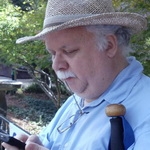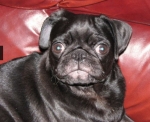Post
by TmjTerri » Tue Jan 03, 2012 12:43 pm
John.. Wow!! You know SO much it really amazes me. Thank you for ALL of your help. I typed out 5 of my sleep studies. I have 1 or 2 more but wanted to show you at least 5 of them right now. The Dec 21st 2009 was my 1st one since 1996. I am sorry if this is alot to read but as good as you are I am sure you are a fast reader..lol. At least I hope so. I don't want to bug you with all of this but you are SO educated on this subject I would love to know what you think about my sleep studies. Thanks SO much in advance.
January 14th 1996
Procedure: The overnight polysomnogram was performed recording the EEG (6), EOG (2), chin and legs EMG (3), EKG, respiratory airflow, thoracic and abdominal effort and oximetry.
Summary: Sleep onset latency is prolonged, and once the patient is asleep, there are some arousals and awakenings due to spontaneous arousals. There was a fairly normal sleep efficiency of 91%, however there was decreased REM sleep of 6% with prolonged REM latency of 242 minutes, normal slow wave sleep of 28%. There are very infrequent respiratory apneas not associated with snoring and not associated with oxygen desaturation. The saturation was maintained above 94% to 96% SaO2. There was a combined apnea/hypopnea index of 12.5 events per hour and an apnea index of 8.3 events per hour. The electrocardiogram demonstrated a sinus rhythm of the usual rate of 80 beats per minute and no significant extrasystoles. There are no periodic movements of sleep or EEG abnormalities.
Interpretation: The overnight polysomnogram demonstrated mild central sleep apnea with no significant obstructive sleep apnea. No significant oxygen desaturation. Nasal CPAP therapy would not be recommended to control this respiratory disorder. The cause of the patient’s morning headaches are not clear, though medication effects or caffeine should be considered.
*** I have a question about this first sleep study. Since I had a few central apneas is it possible that it could have gotten worse had I been tested on a cpap machine? Do you think my doctor at the time should have tested me on a cpap machine to see if I got worse or better or was my sleep apnea not bad enough to try me on it? I just don’t understand how I am so much worse now. I have had sleep issues since way before this first 1996 sleep study.********
My 1st sleep study since this 1996 study and this was with my old sleep doctor.
December 21st 2009
Sleep Parameters: Total study time was 372 minutes.; total sleep time was 280 min. Sleep efficiency was low at 75.4%. Sleep architecture was abnormal. Sleep onset occurred at 25 min.; REM onset occurred at 301 min. There was 1 episode of REM sleep lasting 12.5 min. The patient did not achieve stage N3 sleep. Sleep was fragmented due to intermittent arousals. There were a total of 7 arousals, 2 of which occurred spontaneously; 4 arousals were related to respiratory events. The arousal index was 1.7 events/hr. Snoring was noted. The patient slept in left and supine left-sided postures. Respiratory events occurred in all postures.
Cardio-Respiratory Parameters: Baseline oxygen saturation was 93%. Lowest recorded oxygen saturation was 81%. The patient spent a total of 214.6 min. below an oxygen saturation of 90%. Throughout the period of study, there were 27 hyponeas, 8 central, and 39 obstructive apneas. Mean duration of hyponeas was 31.1 sec. with some lasting 68.5 sec. Mean duration of central apnea was 17.4 sec. with some lasting 26 sec. Mean duration of obstructive apneas was 21.1 sec. with some lasting 40 seconds. Total Respiratory Index (RDI) was elevated at 15.8 events/hr. During REM sleep, the RDI was 38.4 events/hr. The apnea/hypopnea index (AHI) was 15.8 events/hr.
Cardiac Rhythm: There wee cyclic changes in heart rate. Heart rate was maintained in the 70s. No significant arrhythmias were noted.
Impression: Moderate Sleep Apnea Syndrome (780.53)
*******My 2nd sleep study with my old sleep doctor.
December 29th 2009
Sleep Parameters: Total study time was 411 min.; total sleep time was 374 min. Sleep efficiency was good at 91%. Sleep architecture was abnormal. Sleep onset was at 10.5 min.; REM onset occurred at 50 min. There was 1 episode of REM sleep lasting 15.5 min. The patient did not achieve stage N3 sleep. Sleep was fragmented due to intermittent arousals. There were a total of 23 arousals, 12 of which occurred spontaneously; 7 arousals were related to respiratory events and 4 arousals were associated with leg movements. The arousal index was 3.7 events/hr. Snoring was noted. The patient slept in the supine posture.
The study was initiated with CPAP at 6CM H2O and gradually increased to 12 CM H2O due to persistent respiratory events and snoring. Bi-Level ventilation was also initiated at 8/6 Cm H2O and gradually increased to 12/8 CM H2O. Baseline oxygen saturation was 95%. Lowest recorded oxygen saturation was 78%. The patient spent a total of 178.5 minutes below and oxygen saturation of 90%. Throughout the period of study, there were 60 hypopneas, 250 central, 1 mixed and 239 obstructive apneas. Mean duration of hypopneas was 18.6 seconds with some lasting 40 seconds. Mean duration of central apneas was 15 seconds with some lasting 33 seconds. Mean duration of obstructive apneas was 16.4 seconds with some lasting 37.5 seconds. Total respiratory disturbance index (RDI) was 88.2 events/hr. compared to 15.8 events/hr. during her baseline study. During REM sleep, the RDI was 69.7 events/hr. compared to an RDI of 38.4 events/hr/ during her baseline study. Due to the occurrence of frequent of central respiratory events, optimum pressure could not be determined. Cardiac Rhythm: There were cyclic changes in heart rate. Heart rate was maintained in the 60s and 70s. Mean heart rate was in the 70s. No significant arrhythmias were noted. Motor activity/Periodic Leg Movements: There were 7 PLMS episodes with an index of 15.4 events/hr.
Impression: Severe Complex Sleep Apnea
Periodic Limb Movement Disorder.
My 3rd sleep study is this one...
January 6th 2010
Results:
Sleep Parameters: Total study time was 350 min,; total sleep time was 298.5 min. Sleep efficiency was good at 85.3%. Sleep architecture was abnormal. Sleep onset occurred rapidly at 5 min. suggesting pathologic sleepiness; REM sleep did not occur. The patient did not achieve stage N3 sleep. Sleep was fragmented due to intermittent arousals. There were a total of 4 arousals, 2 of which occurred spontaneously; 2 arousals were related to respiratory events. The arousal index was .8 events/hr. Intermittent snoring was noted. The patient slept in the supine, supine left, supine right and upright postures.
Cardio-Respiratory Parameters: The study was intiated with bi-level ventilation at 8/4 cm H2O with a back-up rate of 10 b/pm and gradually increased to 30/25 cm H2O with a back-up rate of 10 b/pm due to persistent respiratory events and arousals. Baseline oxygen saturation was 91%. Throughout the period of study, there were 205 hypopneas, 174 central, 1 mixed and 62 obstructive apneas. Mean duration of central apneas was 15.1 sec. with some lasting 38 second. Mean duration of obstructive was 18.7 sec. with some lasting 38 sec. Total respiratory disturbance index (RDI) was 88.8 events/hr. compared to 15.8 events/hr. during her baseline study. Optimal pressure was not determined. Cardiac Rhythm: There were cyclic changes in heart rate. Heart rate was maintained in the 50s, 60s and 70s. Mean heart rate was in the 60s. No significant arrhythmias were noted. Motor Activity/Periodic Leg Movements (PLMS) No spontaneous leg movement activity was noted throughout the study.
Impression: Complex Sleep Apnea Syndrome
And then my doctor wrote that I had complex sleep apnea which is difficult to control with positive pressure therapy.
Then here is my last sleep study with my NEW sleep doctor tested on the ASV.
Diagnosis and Comment: 327.21 Primary Central Sleep Apnea, Severe
December 20th 2011
Method of study” Complete polysomnography with a digital seep system using the international 10-20 electrode placement for recording EEG (F3/M1, F4/M2, C3/M2, C4/M1, O1/M2, O2/M1), EOG, EMG, from chin, ECG, respiratory effort by inductance piethysmography, oximetry, body position, airflow (thermistry and nasal pressure), snoring sound, pulse rate and limb movement channels. The study was performed in a darkened room (low light video observation). The study was scored using the alternative AASM criteria for hypopneas. The attending physician below performed the epoch by epoch review of this study, formulated an interpretation (not 100% this is the word because my sleep study was faxed twice) of the study and directly participated in the preparation of this report.
Titration- Severe Complex Sleep Apnea. The patient was diagnosed with moderate sleep apnea with an AHI of 15.8 on a diagnostic polysomnogram on December 16th 2009. She was subsequently found to have complex sleep apnea on a CPAP titration study. She was retitrated with BiPAP 30/25 cm H2O with a back-up rate of 10 with persistent respiratory events with an AHI of 88.8 with 40% being central in nature. An ASV titration study was, therefore, performed with setting of minimum EEP=8 cm H2O, maximum EEP=18 cm H2O, minimum pressure support= 4 cm H2O, maximum pressure support = 15 cm H2O with a Respironics ComfortGel (petite) nasal mask and heated humidification. During the 437.5 spent at this pressure, the patient’s AHI was improved to 7.6 and oxygen saturation was maintained in the 89%. There was adequate REM supine time. The patient tolerated the ASV well and felt more rested after the study. Close clinical follow-up is necessary to assess patient tolerance, compliance and response to treatment. In addition, avoidance of sleep in the supine position, avoidance of alcohol and other sedatives, medical maximization of nasal airway patency (e.g. through use of antihistamines or nasal steroids as needed).
TmjTerri
Severe Complex Sleep Apnea
ResMed Vpap Adapt S9 #36007
ResMed H5i Heated Humidifier
NewLife 5 Oxygen Concentrator
Respironics CPAP Nasal Mask with Headgear ComfortGel Blue Size Petite
Pressures 17/30
CMS50F Pulse Oximeter Recordable











